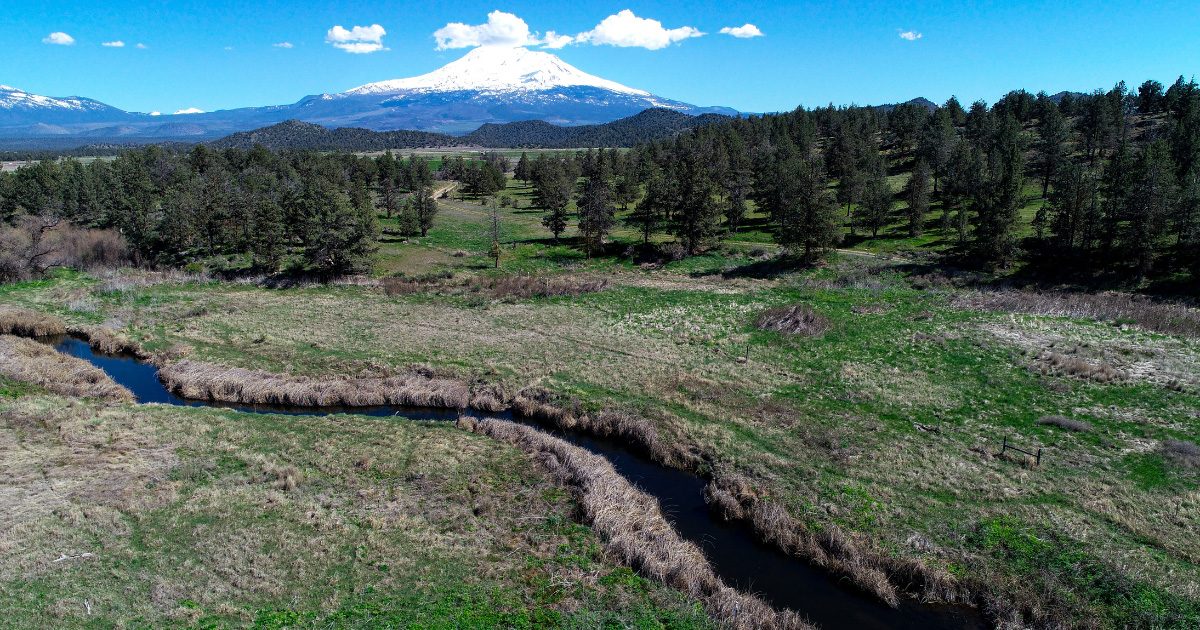CalTrout Awarded CDFW Funds for Shasta Region Salmon Habitat Restoration and Drought Resiliency Projects
On April 13, 2023, the California Department of Fish and Wildlife (CDFW) announced they are awarding California Trout and our partners $4.77 million for four salmon and trout habitat restoration projects that will contribute to drought resiliency in the Klamath River watershed and the Upper Sacramento River watershed. These rivers and their tributaries are strongholds for the California's native salmon populations. The projects bring together landowners, agricultural producers, universities, and Tribes to enhance water availability for both fish and farms. Explore below the four projects awarded and a fifth project that CalTrout is a partner on.
Shasta River Safe Harbor Habitat Improvement Project
Shasta River — CalTrout was awarded $2.81 million and will work with state and federal agencies, CDFW, the Yurok Tribe, Karuk Tribe, and Quartz Valley Tribe, and seven agricultural producers to implement voluntary habitat improvement projects on private land. The CDFW grant will support habitat improvement projects to enhance and expand instream salmon habitat along 26 miles of the Shasta River and its tributaries and will actively restore 40 to 50 acres of instream and streamside (riparian) habitat. The grant will also increase education opportunities for school children in Siskiyou County, including in local Tribal communities.
Process-based Restoration Techniques Feasibility Study
Little Shasta River — The goal of this project, awarded $219,000, is to begin to restore stream function and groundwater-dependent habitat in the lower reach of the Little Shasta River, to help mitigate droughts effects and support salmon recovery in the Klamath Basin. Stream flow in the Little Shasta can decrease drastically during irrigation season, especially as climate change moves California toward hotter, dryer conditions. But cold groundwater from springs creates pockets of good stream and streamside habitat, called climate refugia. These refugia support a rich diversity of native species, not only Chinook and coho salmon but also special status bird species like the greater sandhill crane, Swainson’s hawk and golden eagle. The project will study the feasibility of using a technique called process-based restoration to improve stream and streamside habitat and enhance stream flow. This type of restoration includes actions such as building in-stream structures that mimic beaver dams (beaver dam analogues) and placing logs (large woody debris) to create instream salmon habitat.
Improving Drought Resilience for Water Supply and Native Fishes Project
Upper Sacramento River Basin — This project, awarded $1.73 million, includes research on groundwater and on fishes in springwater habitats, as well as an outreach and education component to engage the two local Tribes and other local communities. The groundwater springs in the Upper Sacramento River Basin provide up to a third of the water in Shasta Reservoir each year. This consistent supply buffers annual changes in precipitation and temperature. However, despite the critical importance of these springs, we know little about their ongoing supply reliability during drought, and their ability to support native fish in an increasingly variable climate. The project will have significance for managing water security and biodiversity and at regional and local scales and will help with the recovery efforts for severely endangered winter-run Chinook salmon and drought-threatened McCloud River Redband Trout.
McCloud River Redband Trout Refuge Pool Habitat Enhancement Project
McCloud River — For this project, awarded $69,000, CalTrout and partners will design and construct instream pools on two McCloud River tributaries to serve as refuges for McCloud River Redband Trout, a Species of Special Concern. This fish uses natural pools during periods of low stream flow, but natural pool habitat has become increasingly scarce due to climate change. The project’s goal is to enhance drought resiliency of Redband Trout habitat.
Scott River Tailings Reach Watershed Restoration Project
Scott River — CalTrout is a partner on this project, awarded $7 million in funds. Led by the Yurok Tribe, this project will work to restore fish habitat and improve water diversion infrastructure on farms. The goal is to increase water use efficiency on the mainstem Scott River to benefit fish and farmers.
“Just this past summer, we saw ranchers, Tribes, & state officials fighting over Shasta River water. I’m thrilled that these projects received funding from CDFW and will give CalTrout the opportunity to bring some of those same individuals & others together to work towards a common goal. We all depend & rely on water – including our fish – and my team is excited to get to work to create a future where we all have the water we need. This could be a real win-win for fish, farms, & some of California’s Tribal communities.”
- Damon Goodman, CalTrout Mt. Shasta/Klamath Regional Director





